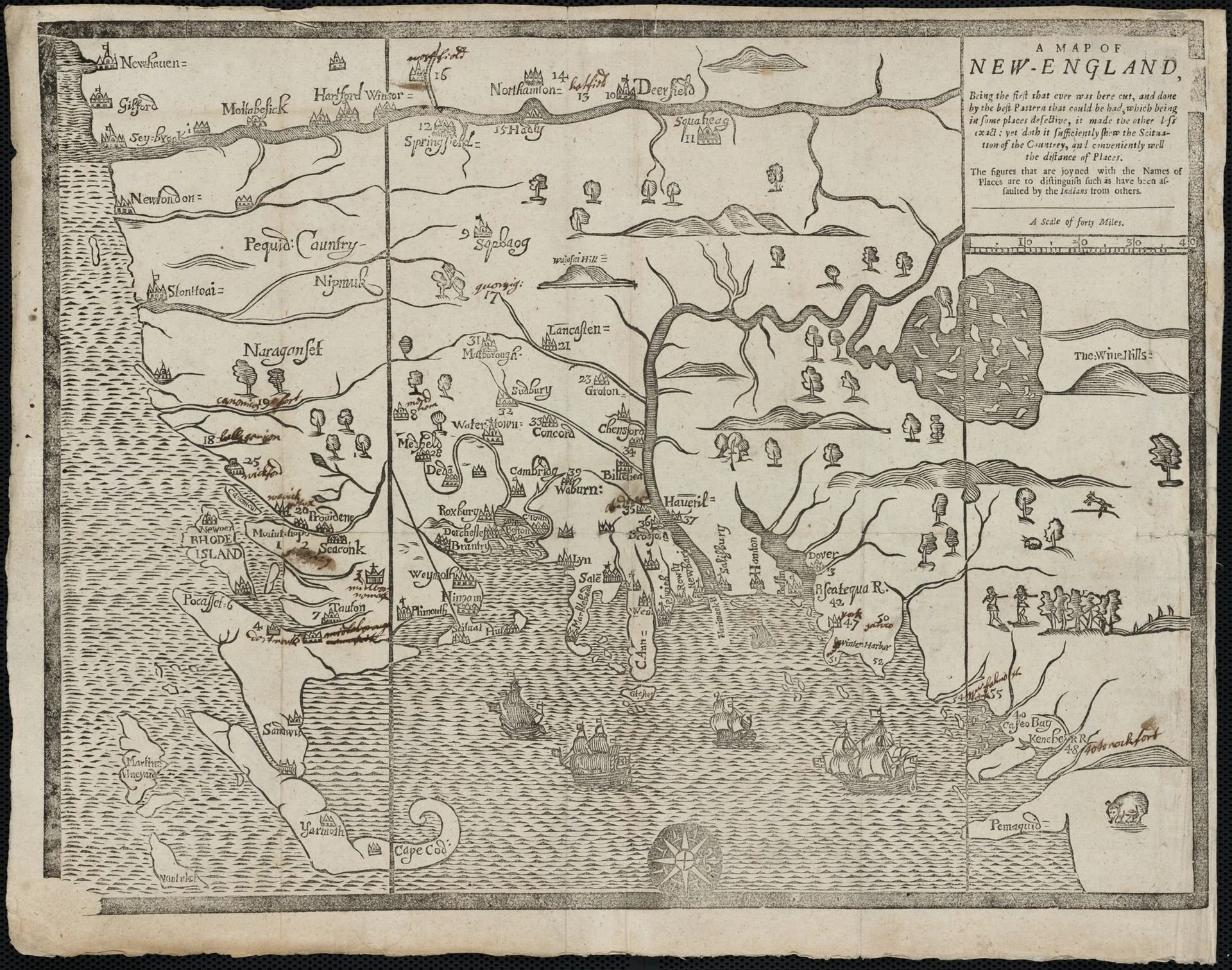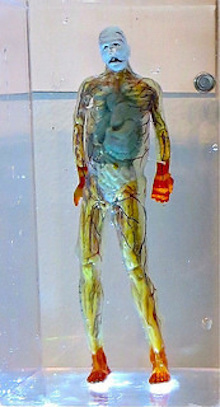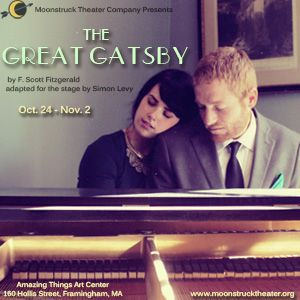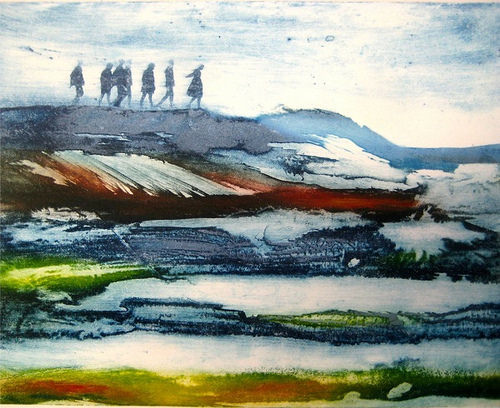The Nobel Prize for economics, granted the other day to Jean Tirole, of the Toulouse School of Economics, capped a 20th Century drama whose story has barely begun to be told. I can describe it here only in the broadest way; thanks to the Swedes, the details will now gradually emerge, as did those of similar developments in the past. But some idea about the episodes’ broader place in the scheme of things, as it pertains to you, can be had by viewing it in historical perspective.
The story begins in the 1920s, in the years before John Maynard Keynes took center stage. Edward Chamberlin (1899-1967) was a bright young graduate student who had come east from Iowa City to Harvard University with a firm grasp of railroad economics. His 1927 thesis developed what he called a theory of monopolistic competition: a more realistic account, he said, of the behavior of companies in markets where sellers are few, industries he called oligopolies, and the prospect of more intelligent regulation.
In fact, Chamberlin was rediscovering ideas published by Augustin Cournot, in 1838, so the story of strategic economic behavior really begins then. If you have a taste for historical detective work, read Secret Origins of Modern Microeconomics: Dupuit and the Engineers, by Robert B. Ekelund Jr. and Robert F Hébert (University of Chicago, 1999). In terms of the memories of the living, the story starts in the ’20s).
It took Chamberlin six years to get The Theory of Monopolistic Competition ready for the university press. By then he was a Harvard professor. By then, too, a young mother married to British economist Austin Robinson had developed a similar way of amending the prevailing dogma. Joan Robinson (1903-83) obtained a job as an assistant lecturer at Cambridge University, from whose Girton College she had graduated a few years before. Her book, The Economics of Imperfect Competition, appeared in Britain just weeks apart from Chamberlin’s in the U.S.
Chamberlin and Robinson began a battle over whose critique of standard theory would prevail. (Harold Hotelling, of Columbia University, had joined the fray as well.) The excitement was enough to bring young Paul Samuelson to Harvard as a graduate student the autumn of 1935, but it didn’t last long. Keynes’s General Theory of Employment, Interest and Money appeared the next year, and by 1938 monopolistic competition had been shouldered aside by the new “macroeconomics,” of which Samuelson became the avatar.
After the war, the literature that Chamberlin (but not Robinson) had spawned mostly retreated into business schools, disguised as corporate strategy. Harvard economist Joseph Schumpeter joined a center for entrepreneurial studies just before he died. Harvard Prof. Edward Mason soldiered on, training a new generation of specialists (including Carl Kaysen) in industrial organization and development economics. Chamberlin and Robinson continued to bicker. Chamberlin never developed a second act; Robinson in the early ’50s began a bold but ultimately unsuccessful attempt to improve on Ricardo and Marx. (Samuelson later wrote that the Swedes had missed a chance when they failed to add Robinson’s name to the 1974 award to Gunnar Myrdal and Friedrich von Hayek, two other influential theorists of the ’30s.)
Meanwhile, leadership in industrial organization swung from Harvard to the University of Chicago, where George Stigler had nothing but contempt for Chamberlin. The three central tenets of Chicago price theory, as Stigler described them: that markets were more efficient than was commonly supposed (advertising, for example, was signaling, a source of information); that competition was far harder to eliminate,and that regulators were easily influenced by those whom they regulated. Twenty-five years of studies in these veins by Stigler, his colleagues and their students culminated in a Nobel Prize for Stigler, in 1982. In his 1988 autobiography, Memoirs of an Unregulated Economist, he wrote that Chicago economics had conquered the field: “By 1980 there remained scarcely a trace of the two Harvard traditions of Chamberlin and Mason in the work of current economists.”
The joke was on him. Monopolistic competition was about to come roaring back, in the form of The Theory of Industrial Organization, published that same year by a young MIT PhD, Jean Tirole. He had written most of it as a researcher at the Ecole Nationale des Ponts et Chaussées, the very school of bridges and highways at which Jules Dupuit had pioneered price theory a century and a half earlier. Tirole returned to MIT as an assistant professor in 1984.
Interest in monopolistic competition had been building in Cambridge throughout the ’70s, owing to the possibility of coming to grips with strategic interaction afforded by game theory. Now a new microeconomics hit Chicago price theory head on, couched in the formal style of expression developed at MIT. Stigler knew the blow was coming, from “the major eastern schools and Stanford University”; it was “closely related in spirit to Chamberlinian economics,” he wrote, “much more rigorous (as well it should be fifty years later) but has not shown equal gains in empirical motivation or empirical applicability.” Last week the Royal Swedish Academy of Sciences disagreed, awarding its prize in economics to Tirole, 32 years after the recognition of Stigler.
More drama unfolded in 1982, the year that four Stanford economists colloquially (and jokingly) known as “the Gang of Four” published a series of articles showing how incomplete information could be incorporated into all manner of problems in industrial organization, starting with what had become known as “the chain store problem” (clobber or accommodate the new entrant who tries to enter your market?). The most important of these, Reputation and Imperfect Information, by David Kreps and Robert Wilson, and Predation, Reputation and Entry Deterrence, by Paul Milgrom and John Roberts, published simultaneously in the Journal of Economic Theory, showed how cooperative behavior could emerge and evanesce in everyday competitive settings. The new models were tools that rendered Tirole’s subject dynamic, open to experiment and investigation. Powerful and inexpensive computers suddenly yielded a means. A green flag dropped on a decade of breakneck work on a “new empirical industrial organization.”
Not everyone welcomed the new style. A new Handbook of Industrial Organization was dominated by Tirole’s work. Sam Peltzman, of the University of Chicago, reviewed it this way in 1991.
Here the reader is ushered into the City of Theory. This is an ethereal sort of place. Policy makers and policy issue are very much in the background. The businesspeople who dwell here are not the type who are troubled by details such as the best way to get something produced and delivered to customers. Rather they resemble chess players whose consuming passion is to divide their opponents’ grand strategy. When they do worry about dealings with subordinates or customers, strategic considerations are never far from their minds In part the reason in that there is not much of a legal system in the City of Theory, and in part that the subordinates and customers are fairly good chess players themselves. So many contracts are implicit and their provisions must be… compatible.
Over the course of the ’90s, policy makers and policy issues, corporations and their customers, came to be seen more and more as resembling the chess players that had been described by Tirole. Deregulation opened a torrent of possibilities, from corporate restructurings to auctions to outsourcing and new compensation arrangements. Practice was informed by theory; the strategic perspective carried the day. By the end of the decade, the University of Chicago surrendered; it hired Roger Myerson away from Northwestern to teach game theory to the next generation of students; in 2007 Myerson shared a Nobel Prize himself with Eric Maskin and Leonid Hurwicz for the work that had put Tirole in business.
In 1994 Tirole moved back to France. Today he is chairman of the Toulouse School of Economics, where he consults widely on issues of regulation, especially in Europe. He has become an expert on banking. Joshua Gans, of the University of Toronto, compares Tirole’s impact on regulatory economics to that of Pasteur on public health; Peter Klein, of the University of Missouri, finds his Ecole Polytechnique/MIT style irritatingly abstract; Tyler Cowen lauds Tirole’s essays in behavior economics.
The worst thing that can be said of the Nobel is that, by freezing discussion until the returns are in and a decision has been made, it forces us to view current events in a rearview mirror. Perhaps that is just as well; sometimes the excitement isn’t sustained. But by providing a series of focal points, the Nobel Prize in Economic Sciences renders unmistakably visible events that otherwise would be easy to miss. If Chamberlin and Robinson were around, they might stop arguing long enough to grump “We told you so” – perhaps even marvel at the verisimilitude that 90 years of ingenuity had wrought.
David Warsh is an economic historian, longtime financial journalist and proprietor of economicprincipals.com.








